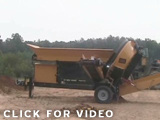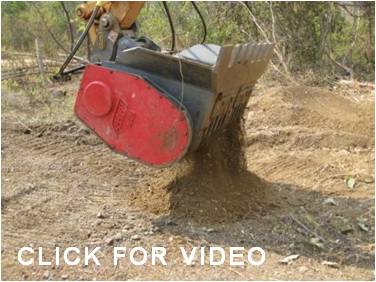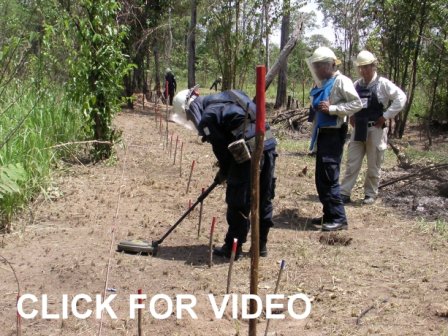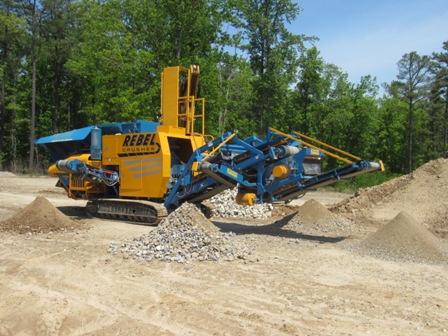





 |

Iraq is massively contaminated with landmines and explosive remnants of war (ERW), the result of the 1980 - 1988 war with Iran, the 1991 Gulf War (first Gulf War), and the violence that has persisted ever since the subsequent outbreak of insurgency. Included are minefields along the borders with Iran and Saudi Arabia. The Islamic State subsequently added extensive amounts of improvised mines and other explosive devices.
According to the 2020 Land Mine Monitor anti-personnel mine contamination (not including improvised mines) covered 1,219km2 (301,221 acres) at the end of 2017. IED contamination covers 185km2 (45,715). Additionally, cluster munition remnants occupy confirmed hazardous areas (CHA) totaling 131km2 (32,371 acres) and 33.5km2 (8.278 acres) of suspected hazardous areas (SHA).
Agricultural land is particularly affected by landmines and UXO, which makes clearance an economic necessity for communities intent on regaining their livelihoods. Large stocks of abandoned ordnance and unstable, poorly secured munitions stockpiles also threaten Iraq`s population by providing a supply of explosive materials for improvised explosive devices (IEDs). Iraq’s priority is the clearance of massive contamination by IEDs and improvised mines from areas liberated from Islamic State. This will enable the return of hundreds of thousands of displaced people, the restoration of public services, and economic recovery.
Ten US Humanitarian Demining Research and Development (HD R&D) Program technologies are currently being evaluated by the Mines Advisory Group (MAG) in Iraq. Consisting primarily of mechanical sifting machines and excavator based tools, this equipment has been used to clear 1,939 mines and 295 items of unexploded ordnance from 284,785 cubic meters (10,057,087 cubic feet) of land to date.
Sources: To Walk the Earth in Safety, 2023
Landmine Monitor Report, 2020
|
|
ORBIT SCREENER |

|
The Orbital Action Screening Plant Model 68 efficiently sifts through a variety of soil types for landmines of all sizes. Material is loaded into the 1.8 cubic-yard hopper and fed into a rotating and tilted screen of appropriate size that quickly separates large and/or light items from soil. The highly portable and user friendly Orbit Screen is highly resistant to plugging with plastic, paper, sticks, and vegetation.
Distribution Statement A: Approved for public release.



PARTNERS: Ecuador (2010); The HALO Trust - Afghanistan, The HALO Trust - Mozambique (2011-2014); Mines Advisory Group - Iraq
|
|
Multi-tool Attachments |

|
The Humanitarian Demining Research and Development (HD R&D) Program has developed a wide variety of excavator and loader based tools for mechanical mine clearance. These attachments give deminers the capability to perform area preparation, technical survey and mine clearance from a safe area. Tools that have proven useful include vegetation cutters, grapples, tillers, and buckets for sifting, grinding, and crushing. The HD R&D Program has modified several small, medium and large class excavators with armor protection and the interfaces needed to use these tools in various demining environments. Operational Field Evaluations (OFE) can be performed with HD R&D Program developed excavators or loaders, or with just the tools mounted to the demining organization`s own host equipment.
Distribution Statement A: Approved for public release.



PARTNERS: Mines Advisory Group; Golden West Humanitarian Foundation; The HALO Trust
|
|
Minehound |

|
Minehound is a commercially available dual sensor handheld detector that uses ground penetrating radar (GPR) and metal detection technology to locate landmines, unexploded ordnance (UXO) and improvised explosive devices (IED). The GPR can be operated independently which gives Minehound the ability to detect deeper buried, low metallic threats. The GPR audio tone provides information on the size and depth of the object it detects. Twenty frequencies are available to the metal detection sub-system, which allows the Minehound to be operated in close proximity to other detectors and near power lines without causing or being subject to interference. The metal detector also compensates for water and mineralized soil without reducing sensitivity.
Distribution Statement A: Approved for public release.



PARTNERS: The HALO Trust - Afghanistan, Angola (2012-2015), Cambodia (2012-2017); MAG - Iraq (Mar-Oct 2017)
|
|
Rebel Crusher |

|
The Rebel Crusher is a commercial mobile soil sifter and rock crushing plant modified for demining operations. It is designed to operate in areas where a significant fraction of the soil is composed of mine-sized objects (rocks) which make sifting difficult, or where dense metallic clutter makes mines undetectable. Modifications to the system include hardening the crushing chamber to withstand anti-personnel mine blasts, and increasing the capacity of the sifting mechanism. The Rebel Crusher is capable of processing 75-125 tons of soil per hour. Distribution Statement A: Approved for public release.


PARTNERS: Mines Advisory Group (MAG)-Lebanon, MAG -Iraq (2014-2021)
|
|
    
|
|

